Some of the links in this post may be affiliate links.
Do you have a rubber plant that lost many of its lower leaves and you want to give it a new lease on life? Or maybe it has reached the ceiling and you don’t know what to do with it?
If so, the air layering technique would be a perfect way to save and propagate your plant! It is easy and quick to do, and only requires a few simple steps.
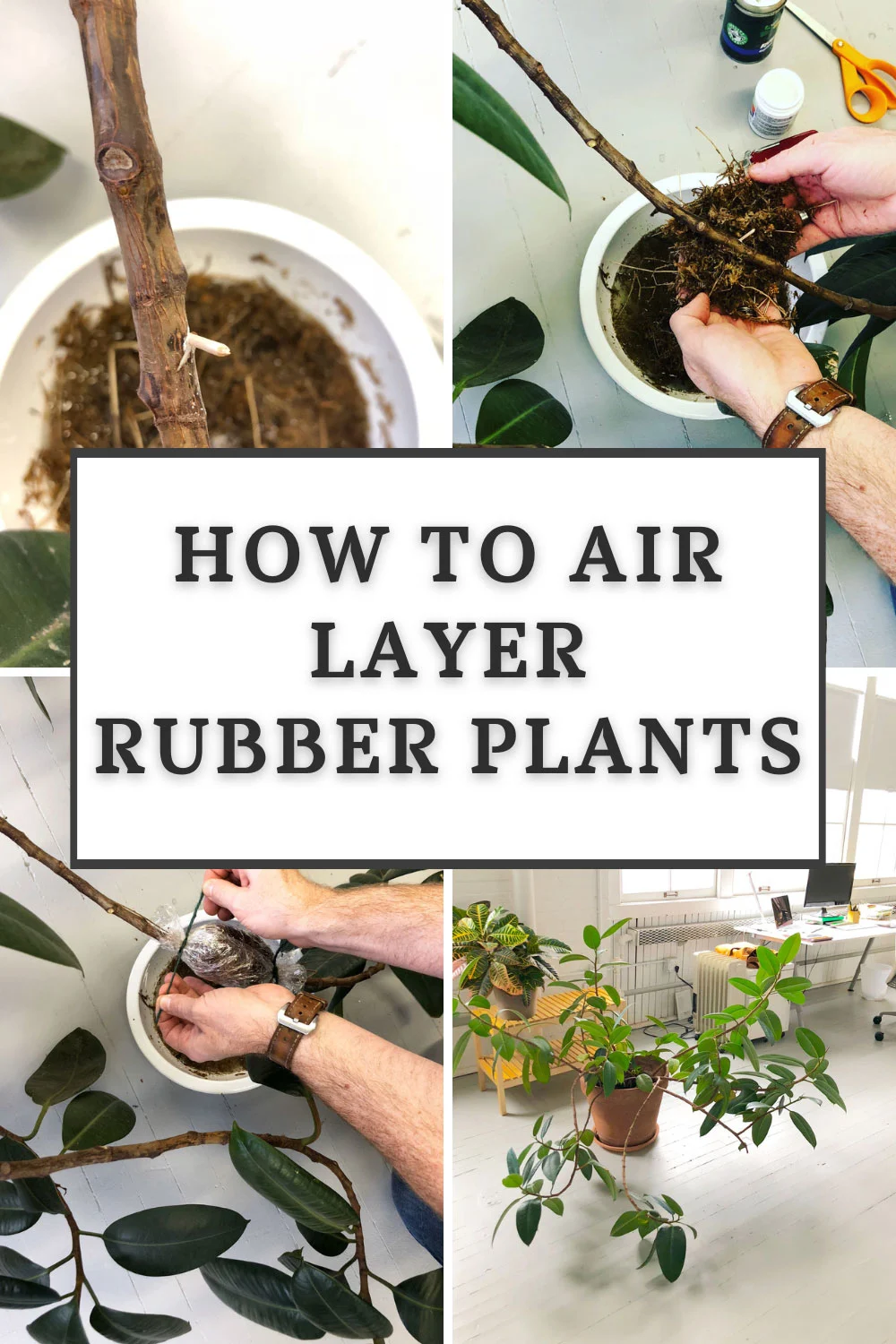
Table of Contents
Air Layering Technique
What is Air Layering?
Air layering is a propagation technique that is often used on older plants that have become woody and would be difficult to propagate otherwise.
This technique allows your cutting to actually form roots while it is still attached to the parent plant! This technique minimizes the shock that your cutting will endure while it is rooting, and maximizes your success!
Materials You Will Need
Sphagnum moss
A bowl with water
Scissors
A sharp knife
Garden twine or a thick string
Rooting Hormone
A toothpick (you’ll want the sturdy round kind with pointy ends)
Clear plastic wrap
And of course, your plant! Below, I will show how I air layered this Ficus elastica (rubber plant) at Agnes Studio in Cleveland, Ohio.
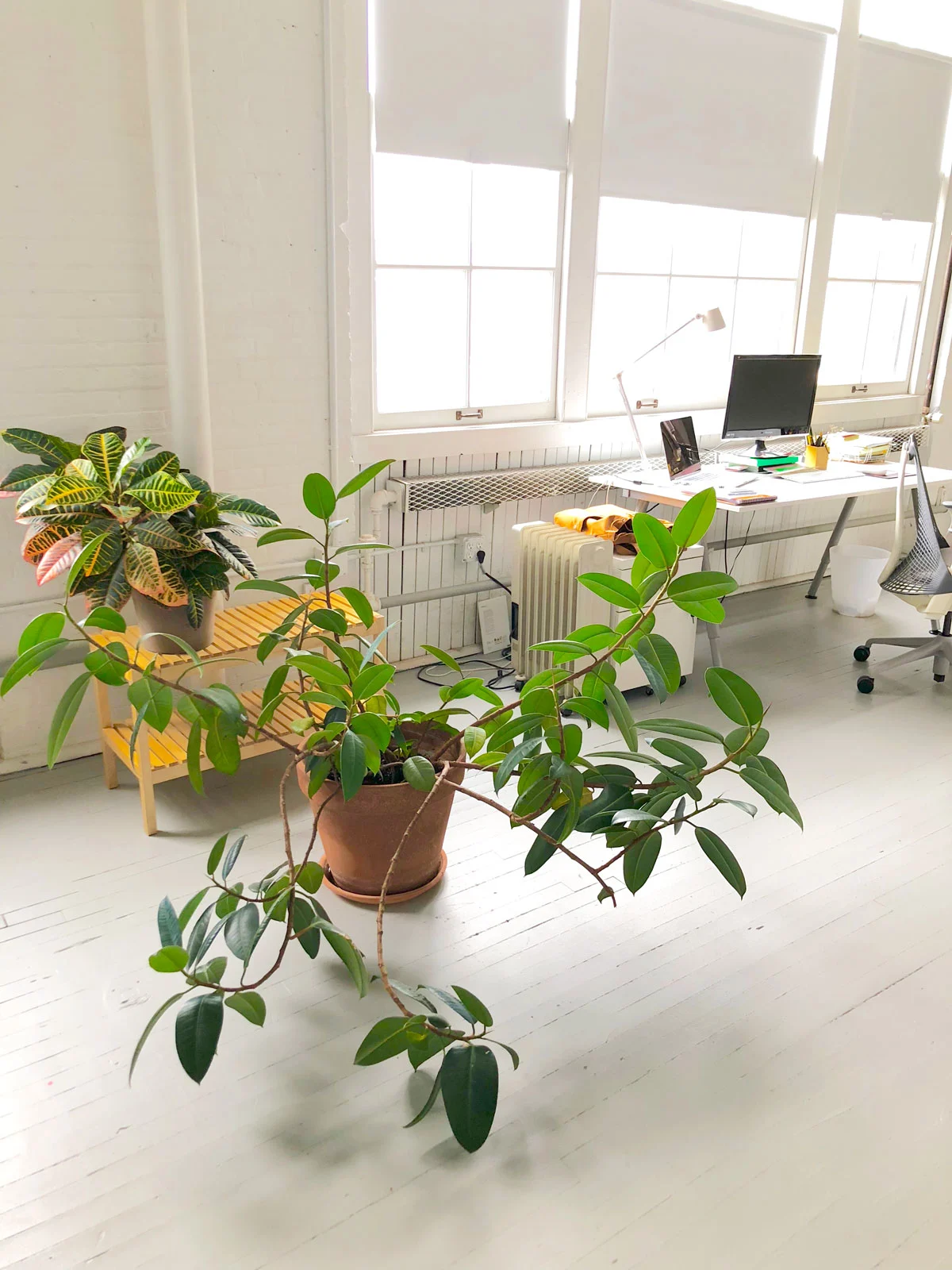
How to Air Layer Your Rubber Plant
Prepare the Sphagnum Moss
Take a handful of sphagnum moss and soak it in warm water for at least a couple minutes. You will be using this as the medium that the roots will be growing into.
Make an Incision
Take your sharp knife and carefully cut about halfway into your stem. I don’t think it really matters what direction you slant your cut.
Some people do it perpendicular to the stem, but I chose to do it on an angle as you can see from the picture below.
You can see some latex oozing from the cut and this is normal if you are air layering a rubber plant. If you get the latex on your hands, wash them with soap and water so you don’t get skin irritation. You can use gloves if you’d like.
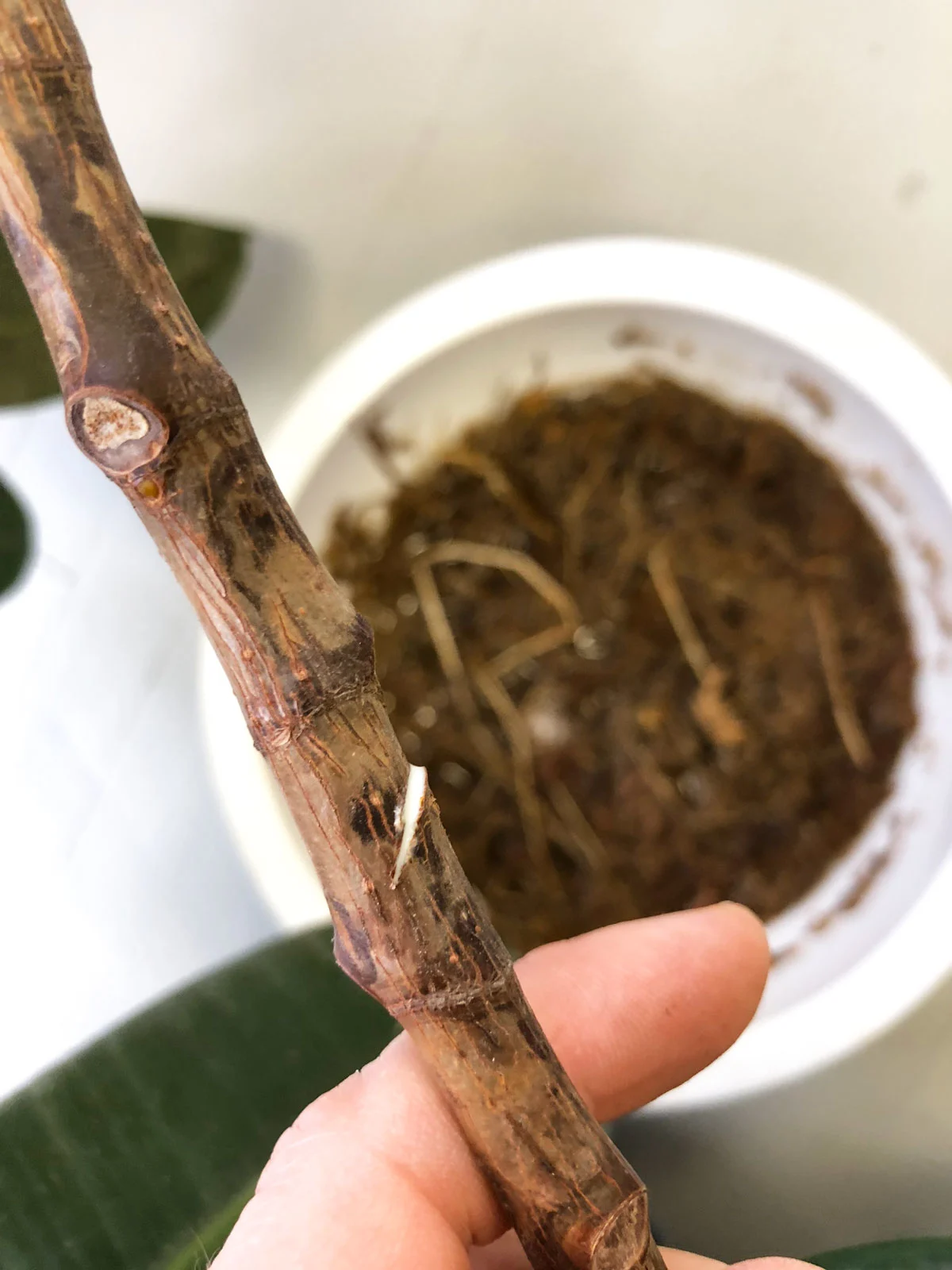
Another step that you can take is optional (but very beneficial) is to gently take your sharp knife and cut off maybe a half inch thin strip of the bark all the way around the perimeter of the stem in the location where you make the diagonal cut.
Prop Open the Incision
Next, you will prop the incision open with a toothpick and dust both the cut that you made and the band of stem that you debarked with rooting hormone.
I like to use the following rooting hormone, available on Amazon: Garden Safe Take Root Rooting Hormone. The rooting hormone will speed up how quickly roots will grow on your
Take the tip of a toothpick (you can also use a Q-tip or the edge of a knife), dip it in water, and then dip it in a rooting hormone. Then gently apply the rooting hormone to the incision that you’ve made (as well as to the band of bark that you removed around the perimeter of the stem.)
Then take the toothpick and gently insert the center of the toothpick horizontally into the incision so that it can hold open the cut while the roots are growing.
Then take your scissors and cut off both ends of the toothpick. You’ll want to do this so that the points of the toothpick don’t pierce holes into the plastic wrap once you wrap it in Step 5.
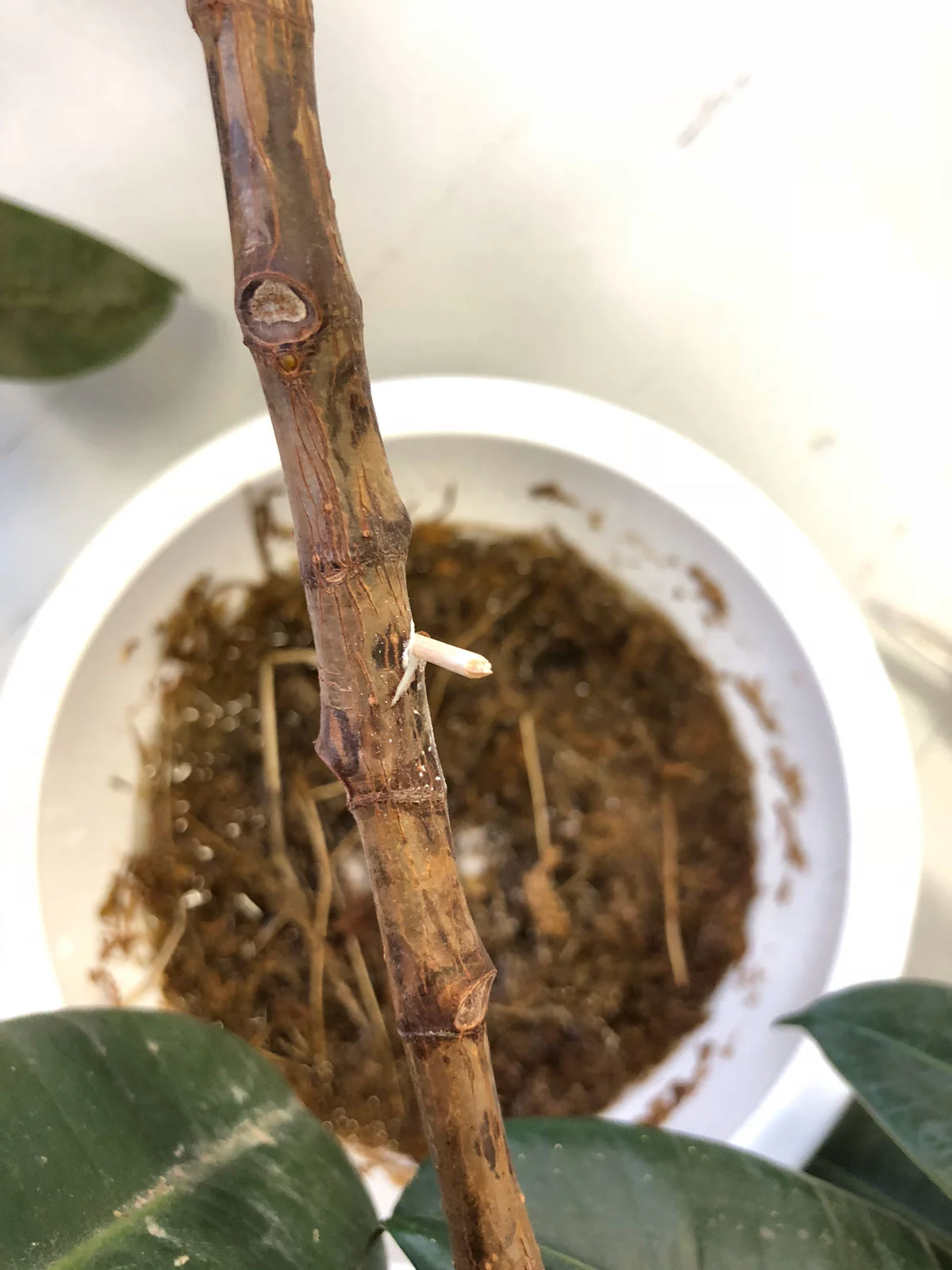
Wrap with Sphagnum Moss
Take your sphagnum moss that you have soaking in water and squeeze out all the excess moisture with your hands.
You want it damp, but not dripping wet otherwise your plant may rot. Then gently wrap the moss around where you cut the stem and gently squeeze it into a ball so that there is proper contact between the moss and the cut that you’ve made.
First I placed the moss behind the stem.
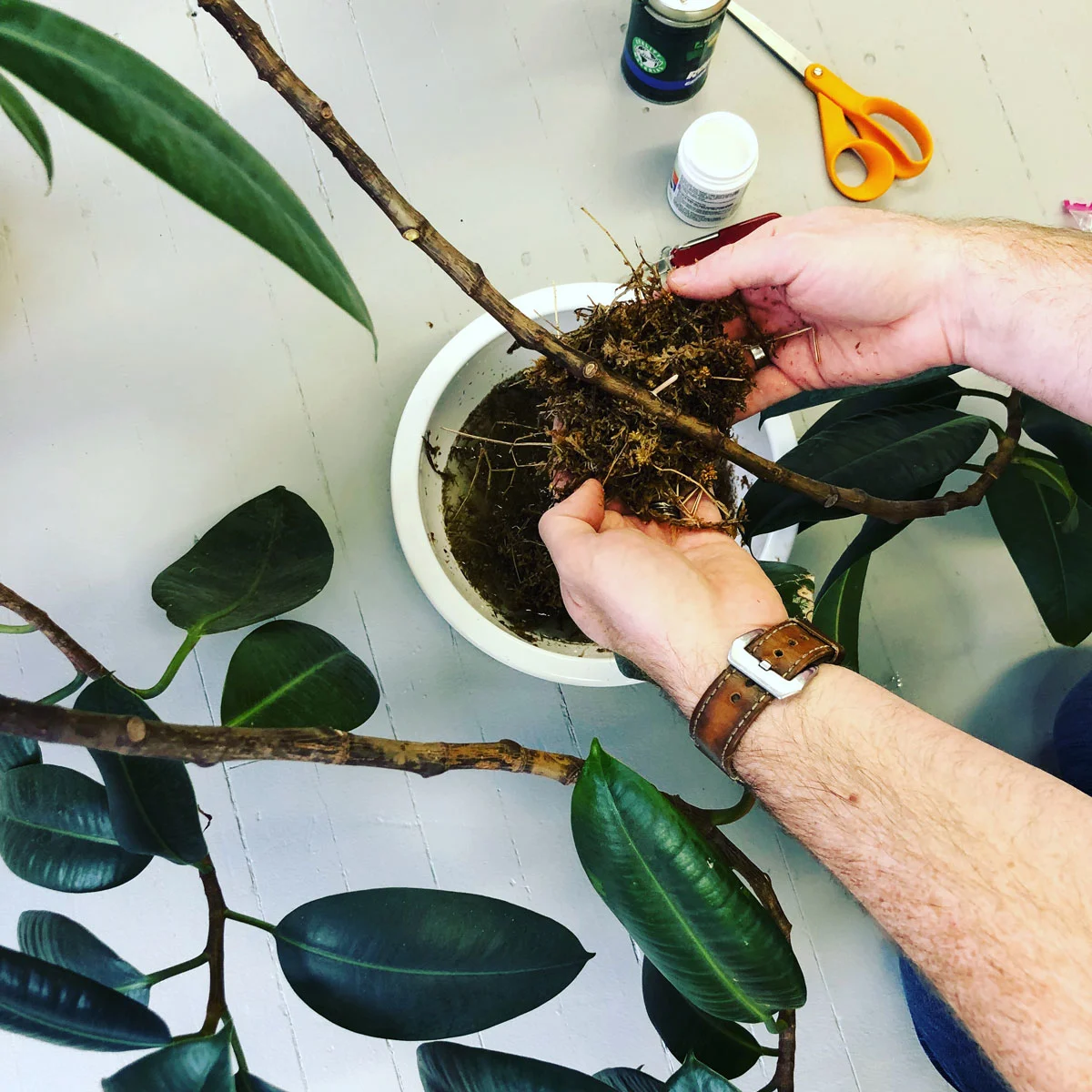
And then I wrapped the moss around the stem into a ball.
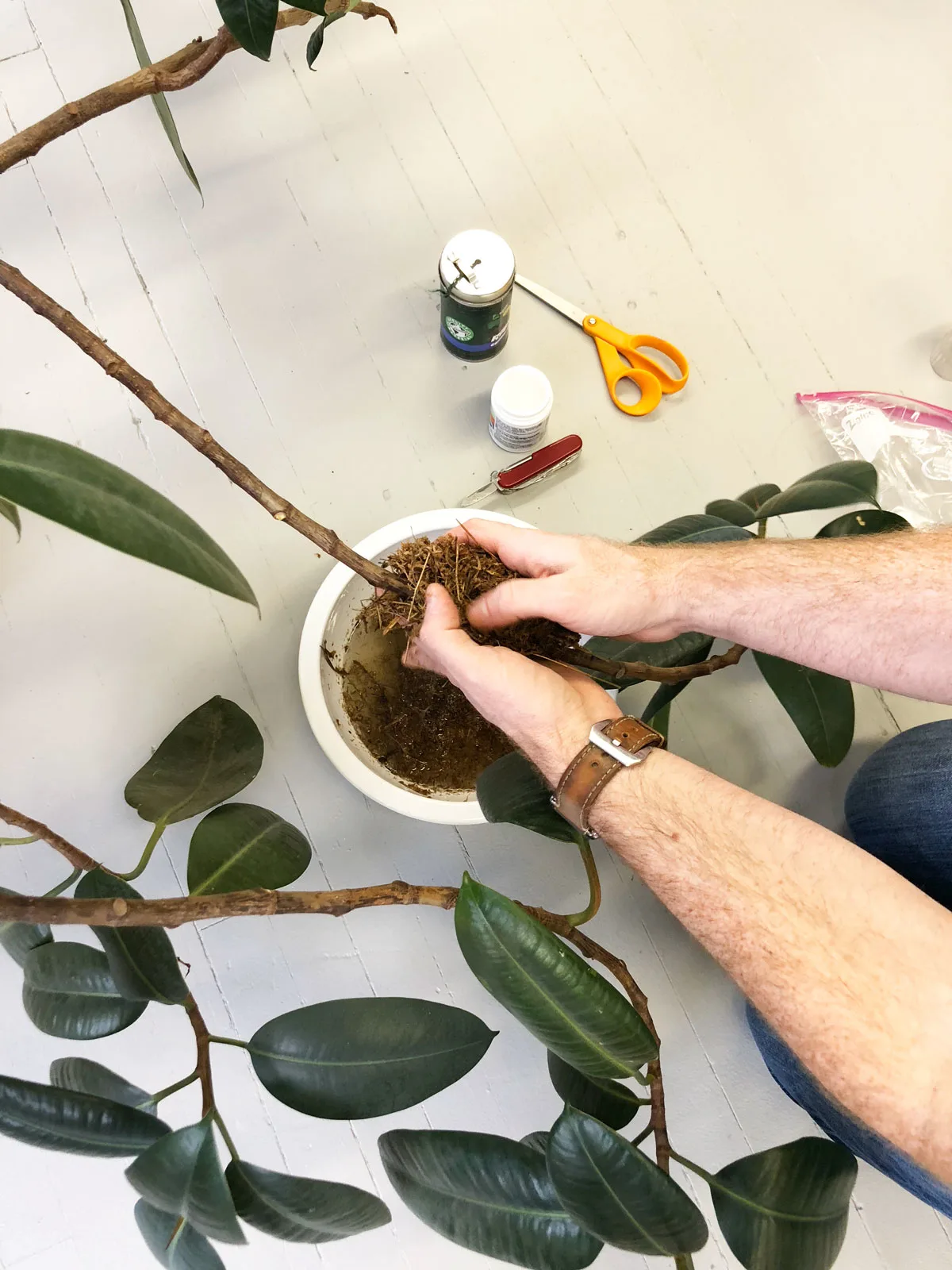
After you have a nice ball of moss surrounding your cut, take some clear plastic wrap and wrap it around the moss a few times.
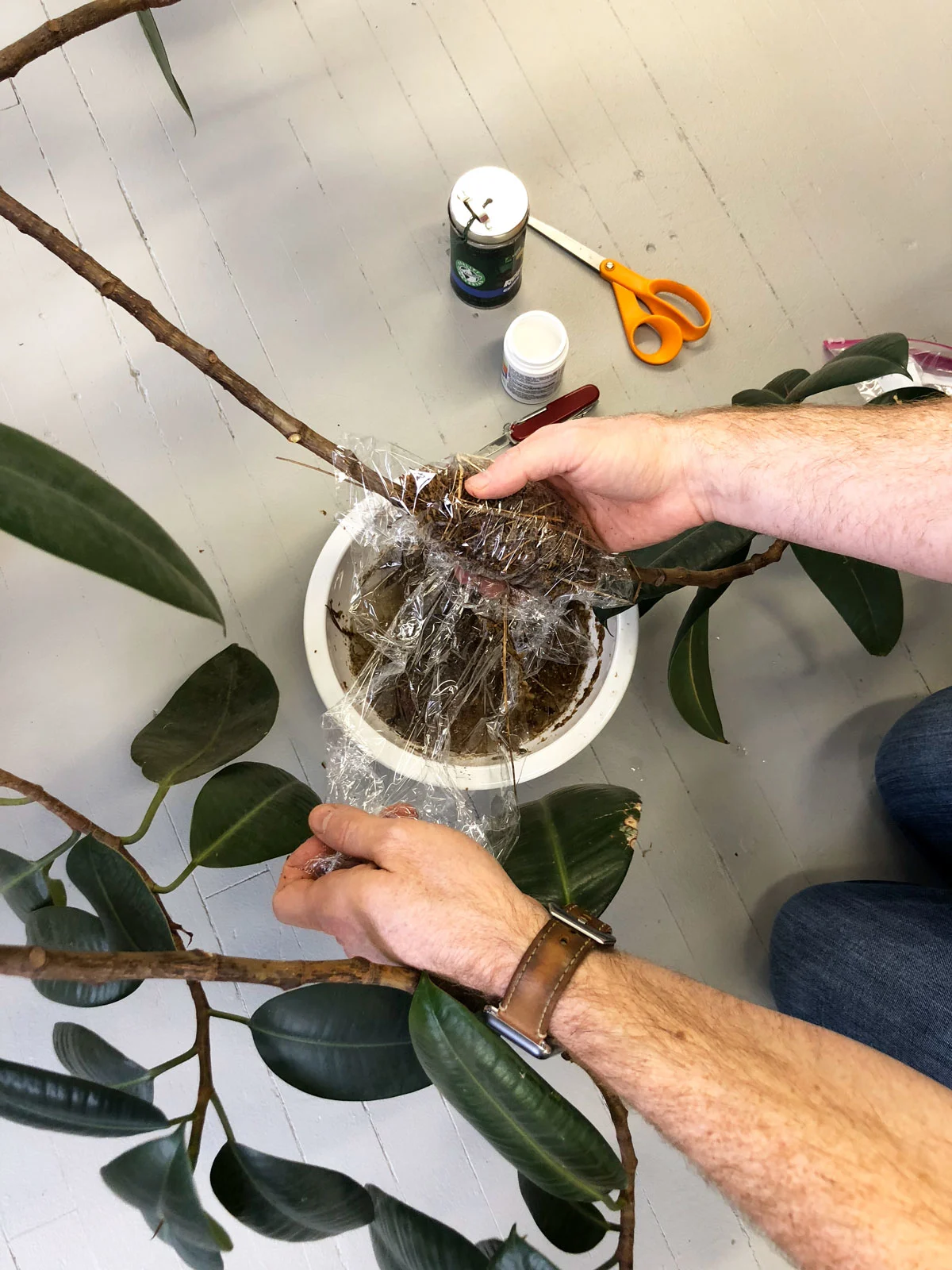
Secure the Plastic Wrap
Finally, firmly tie both ends of the plastic wrap with garden twine. I like to tie it like I’m tying my shoe laces. This way, you can easily remove it when the cutting has rooted.
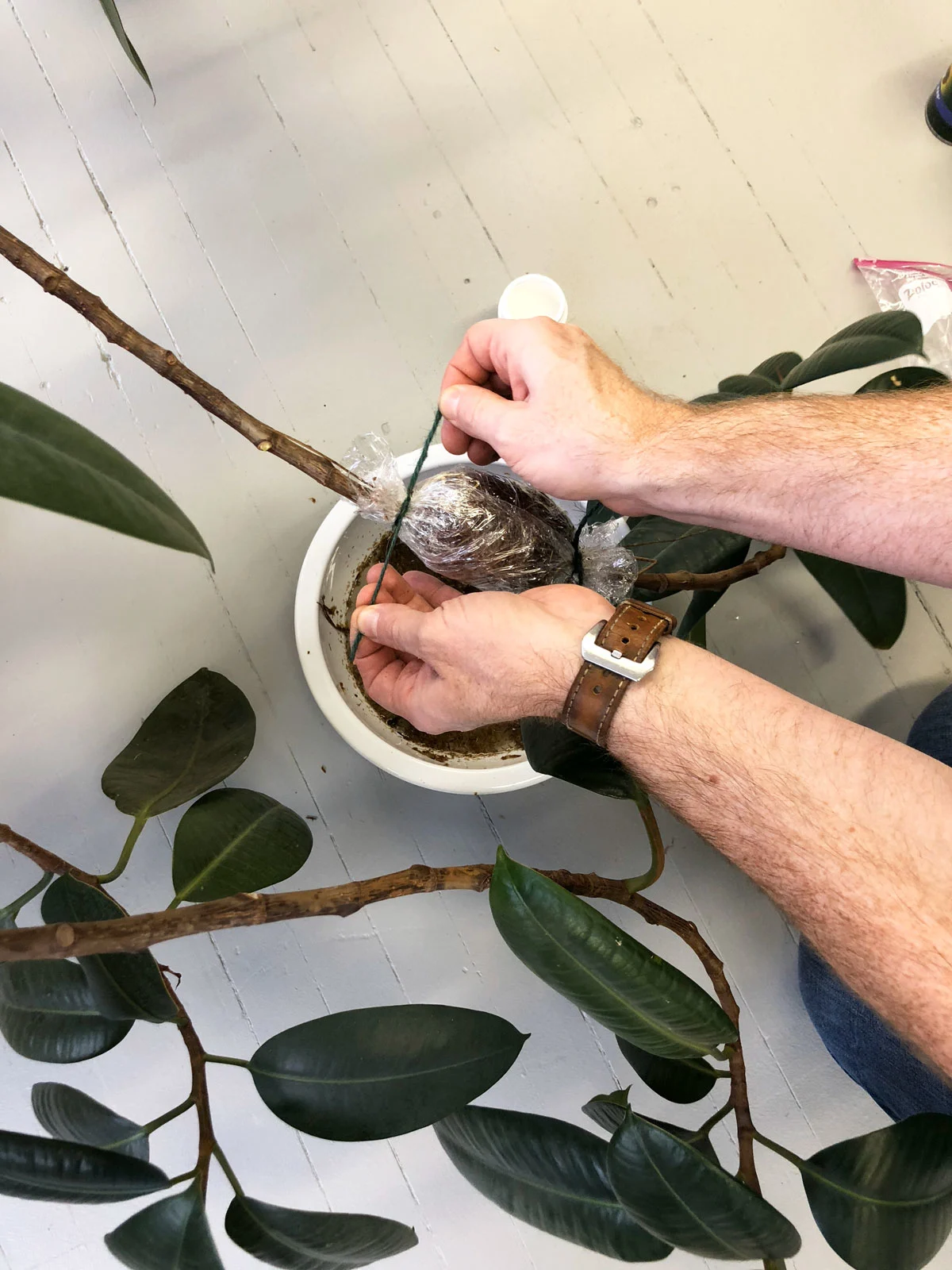
Wait!
This is the hardest part…waiting! It may be a few months before your cutting roots, so it’ll require a little patience on your part.
Separate your Cutting and Pot It Up
After a few months, you should be able to see the roots growing through the moss inside of the plastic wrap.
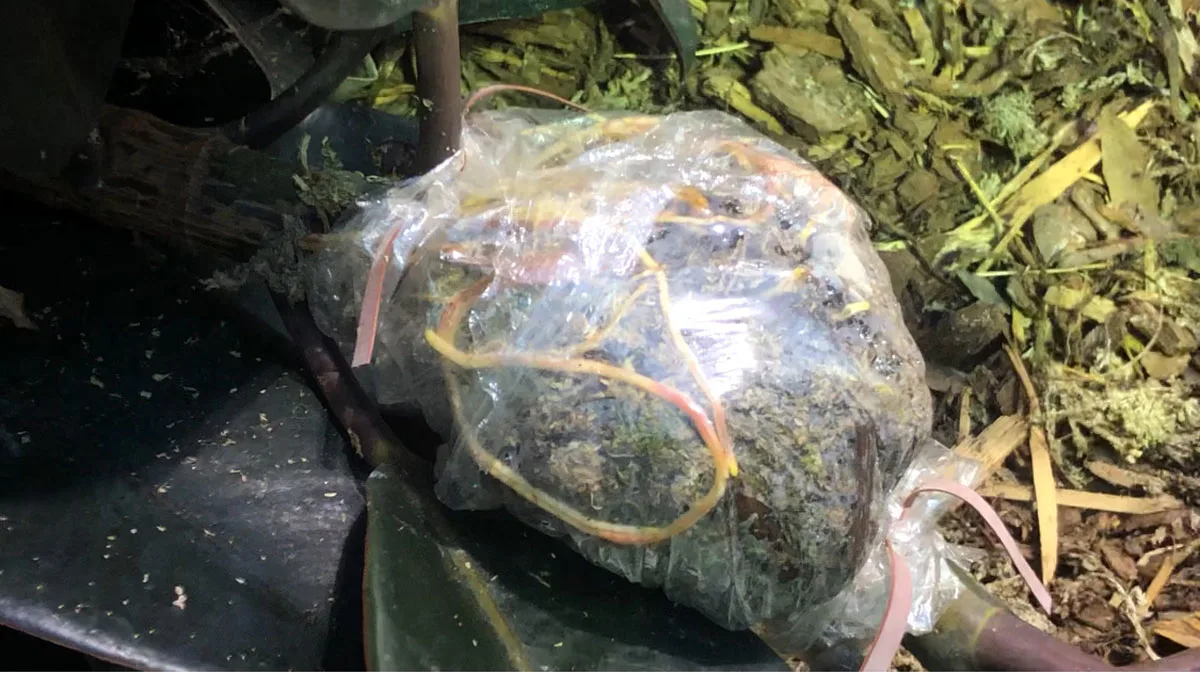
At this point, you can cut the cutting off of the parent plant and pot it up. This actually has two benefits:
- You’ve propagated a whole new plant!
- The stem on your original plant should grow a new branch (or maybe even two) and your parent plant will get more full. See my blog post on pruning rubber plants to get a bushier plant.
So try it out! Have you tried air layering your rubber plant? Comment below!

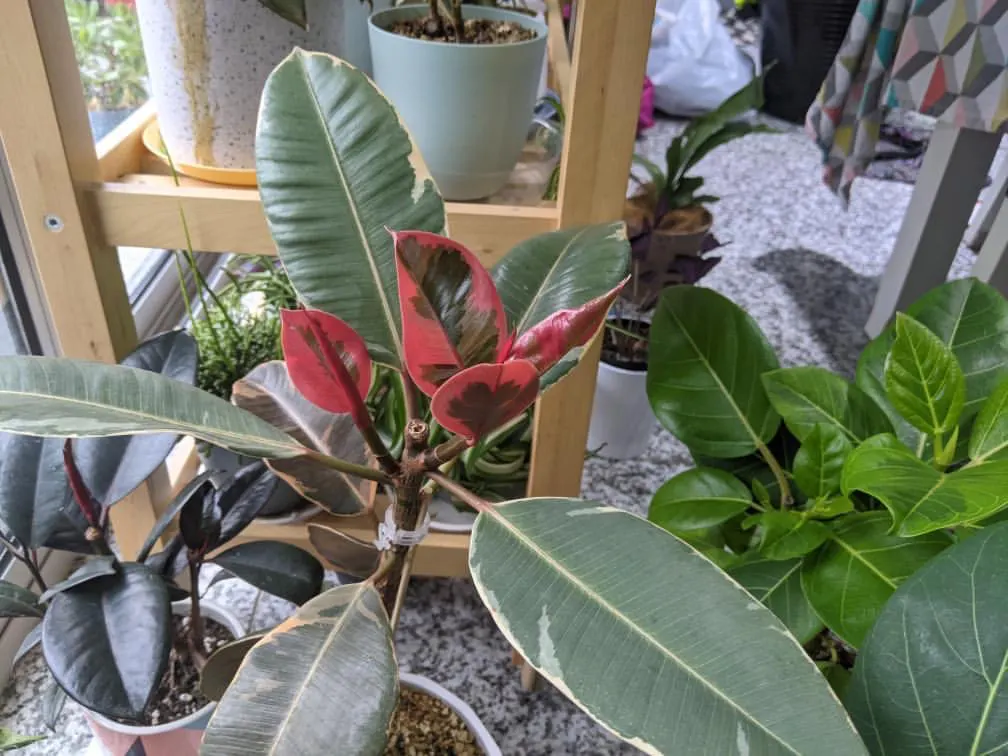
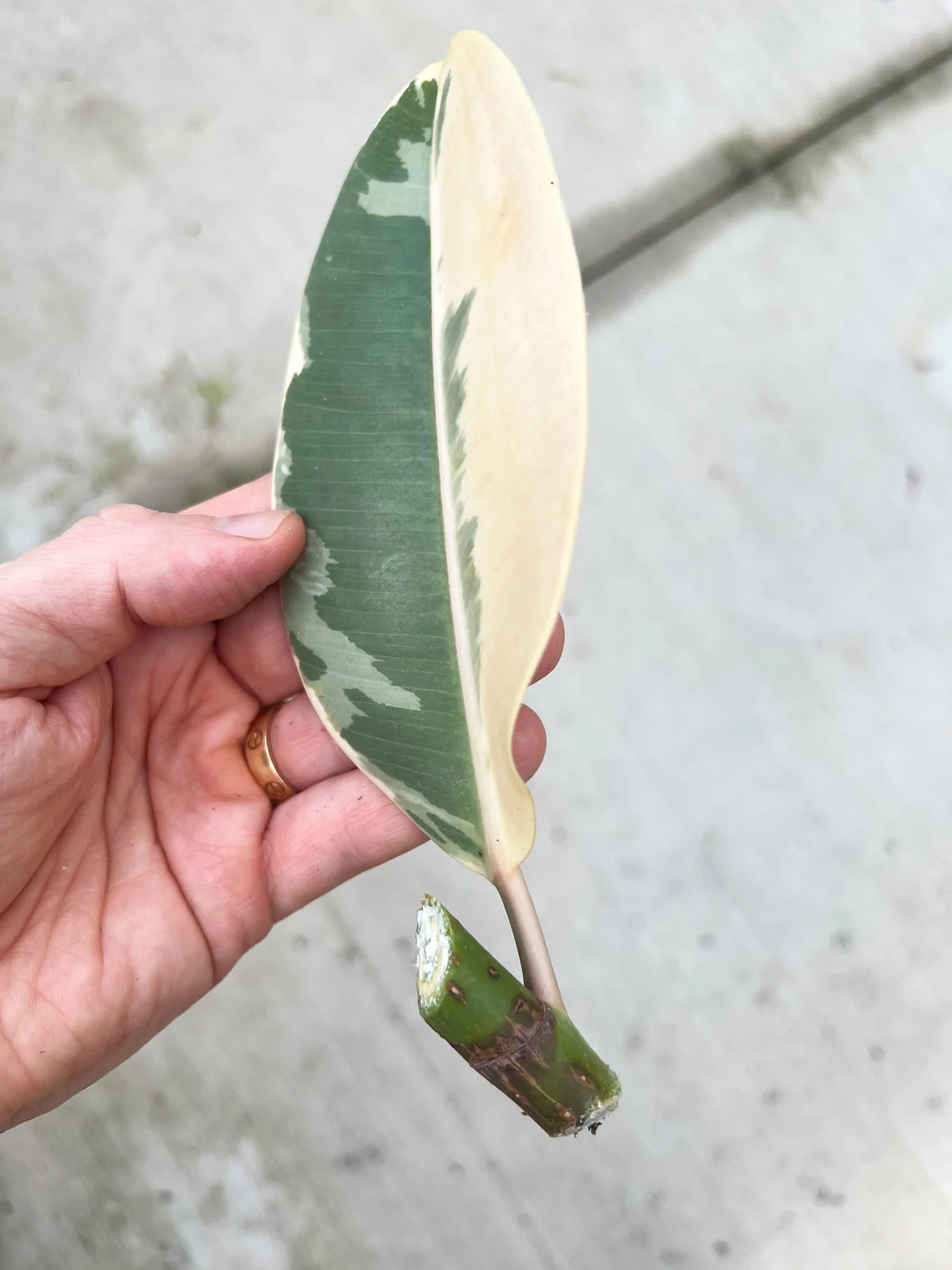
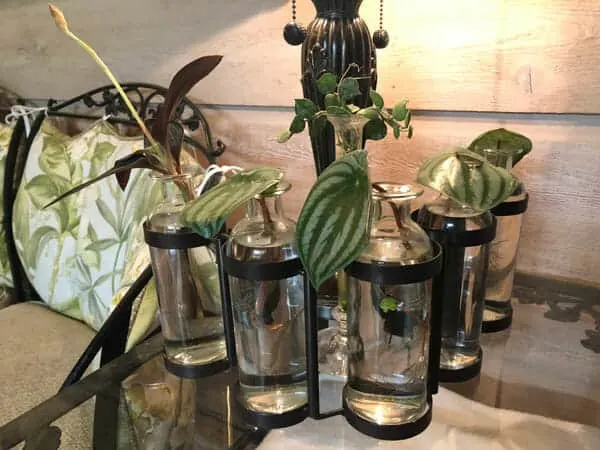
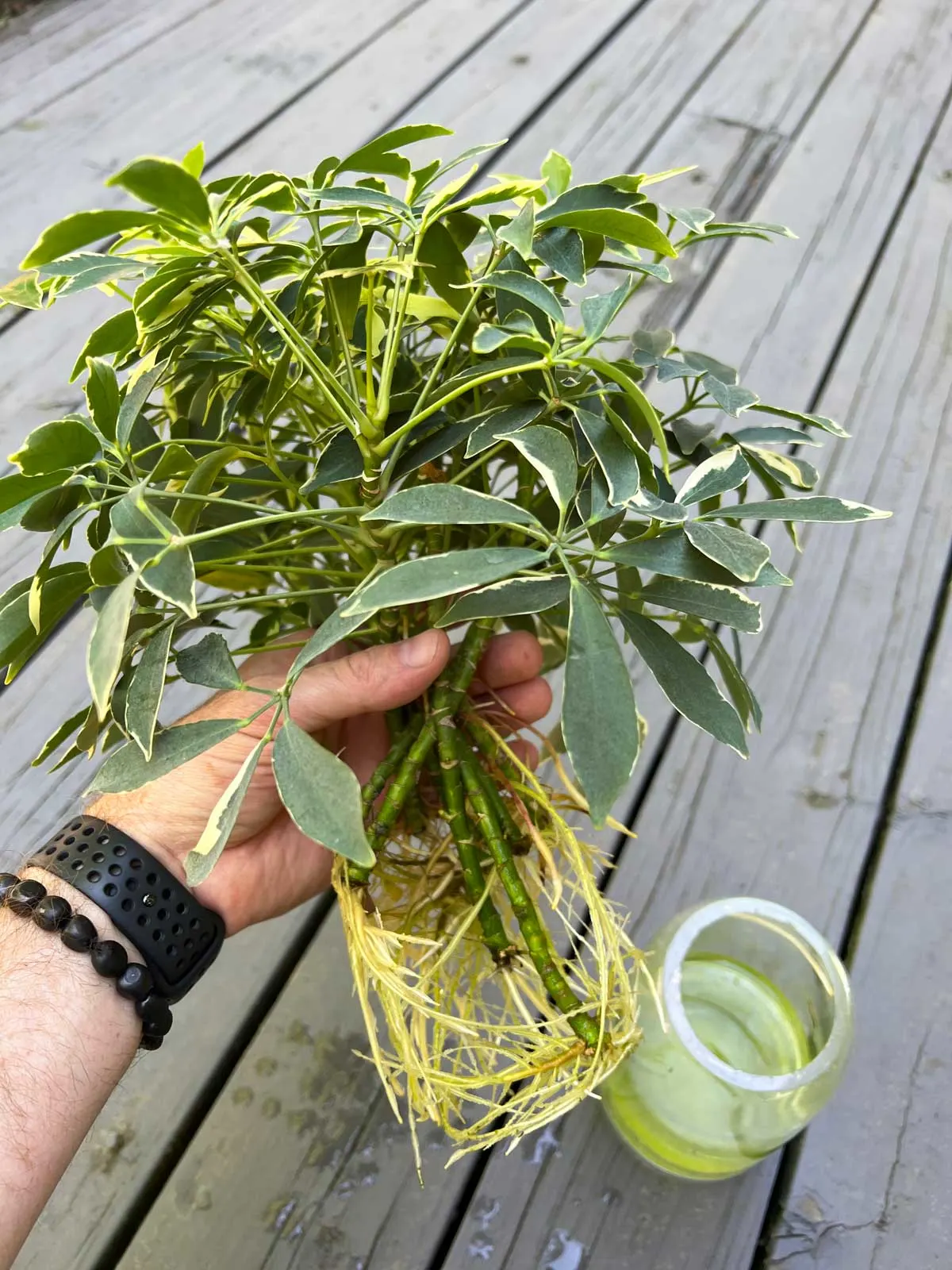
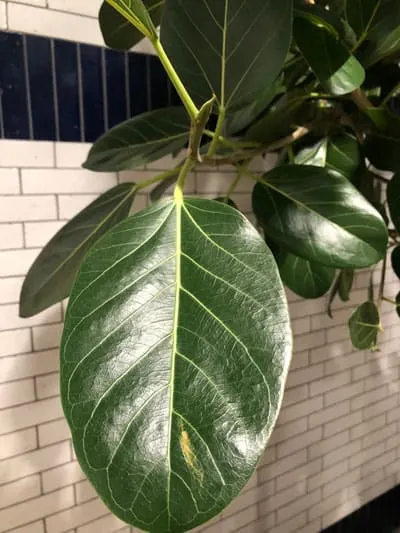
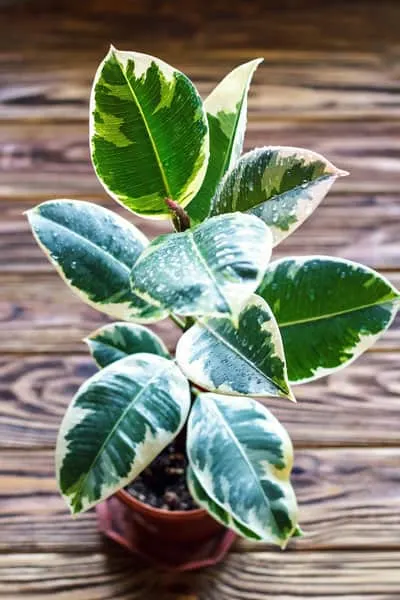
Liz
Wednesday 30th of October 2024
This is the first time I've heard of air layering, thank you so much for this! Is this similar to water propagation where it can be done year-round but best to do during early spring/summer?
Raffaele Di Lallo
Wednesday 30th of October 2024
You're very welcome! And yes, that is correct.
Carrie
Wednesday 5th of July 2023
Hello! Great, clear instructions. Gives me confidence that I can create a new plant from my Grandmother's legacy plant. Question though. Grandma's plant is very leggy, and very mature (woody). It has been in the same pot/soil for more years than I can remember. I moved it to my house after she passed, and I've now had it for two and a half years. I've been scared to do anything with it. I think I'm ready to try.
My question is: Can I repot it, and then air layer it? Or do I need to wait a substantial amount of time after repotting? Or should I air layer it, take my new cutting when it's time, and then repot? Not sure what to do first...
Thank you!
Raffaele
Wednesday 5th of July 2023
Hi Carrie! You should be ok doing both at the same time. The air layering will take a while, so maybe repot it first since it sounds like it needs it, and then try the air layering. Good luck!
Arleen Tampus
Tuesday 27th of September 2022
Good Morning, I have a Dama de Noche or Night Blooming Jasmine and it is very leggy and drooping. Would it be advisable if I cut it? It has small, thin and long stems. Sometimes it blooms and it does smell so sweet I don't know how to make it lush . Its stems have not gone bigger or thicker. It once was attacked by aphids. I thought it would die but it survived and new leaves replaced the curled and mangled leaves from the aphids attack.
I hope to see it grow to a more healthy plant.
Raffaele
Monday 3rd of October 2022
It sounds like it's not getting nearly enough light. True jasmines like a lot of direct sun.
Fonda
Thursday 4th of August 2022
Thank you for all the wonderful information!
My rubber tree lost most of it's leaves before we realized it had to move to a sunnier spot, and now it's very top heavy with large leaves. The bottom 2 feet has no leaves.
Is it possible to Air Layer it down low - will the bottom part grow new branches if there are no leaves there? I worry about creating the "bush" part of it up so high when the trunk is so thin. Thank you!
Fonda
Friday 5th of August 2022
@Raffaele, Thank you for your reply!
I think I understand... if I try air layering say just above the bottom 2 leaves, then when that is ready, remove it and plant the top in another pot.
Then what is left with the trunk and 2 leaves... do I just cut that low, or try air layering again low down? Have I got that right?
I'm so grateful for your help!
Raffaele
Thursday 4th of August 2022
You're very welcome! You could try air layering the top portion where there are still leaves. After that roots, you can cut it off and plant those portions...and then you can cut the trunk down lower in order to encourage branching lower down. Does that make sense?
Sarah
Friday 8th of July 2022
Hi my rubber plant lost ALL it's leaves, and is just a stalk. I've been away for a few weeks and there appears to be a new baby plant growing at the base! How do I care for this? Will it have its own root? Do I need to separate it?
Raffaele
Friday 8th of July 2022
Hi Sarah, sorry to hear about your plant! I would not try to separate the little baby. It may be really tricky, and will fare much better if you just leave it. Assuming the leafless trunks are not too far gone and dried up, you may want to take this opportunity to prune them a bit. This can help the plant branch out more. Check out this blog post so you can see what I'm talking about, and good luck: https://www.ohiotropics.com/2021/09/06/how-to-make-a-rubber-plant-bushy/